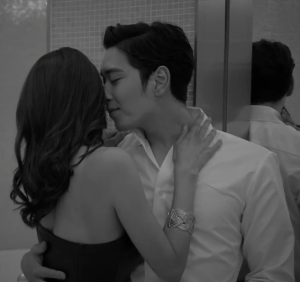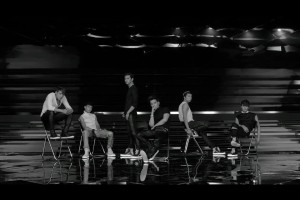 Trends come and go like the seasons, ever changing and as unpredictable as the weather. Somehow though, there are a few long-standing classics that never seem to go out of style.
Trends come and go like the seasons, ever changing and as unpredictable as the weather. Somehow though, there are a few long-standing classics that never seem to go out of style.
The monochromatic style appeals to a broad audience on many levels. The reasons for its usage vary in degree, but for the most part, it is a timeless method that hardly ever fails to evoke strong responses from fans. Following down the path of the one-take MV, let us give praise to this ode to grey scale and the art of black and white MVs.
When film first began in the 1800’s, the idea of colorization was not a priority. People were simply stunned to see moving pictures at all, so who cared that everything was in grey scale? In fact, the addition of color to film didn’t come about until 1906 through a two-colored process called “Kinemacolor.” Almost a century of time passed between the beginning of film to the development of color-processing in film, yet people watched because the content was the most important aspect of this art form.
That attitude clearly lives on today as seen in recent MVs, like Yoon Mi-rae‘s “Angel”. Devoid of the stereotypical, over-saturated K-pop rainbow, this MV stripped itself of any visual distractions to focus on the artists themselves. This serves the song well as Yoon Mi-rae sings of the highs and lows of life with her husband Tiger JK and fellow MFBTY member Bizzy. The MV shows their strong bond, which doesn’t need to be showered in a flurry of fan-service aegyo or self-filmed home video clips. All the viewer needs to see is the group itself, bonding as a complete unit. The mellow beat of the song was served well by the monochromatic tones because the message was just as simple as the style itself.
[youtube http://www.youtube.com/watch?v=XJw1DF1ub9w?rel=0]Sometimes, the reason for monochrome extends beyond simplicity, which is seen in “ADTOY” by 2pm. In this case, the director clearly used the style for aesthetic purposes, and it worked beautifully. In this instance, 2pm longs for a lover who never leaves their mind, which invokes the idea of tunnel vision. In terms of color, their feelings are just as black and white as the video. Their obsession isn’t a convoluted kaleidoscope of mixed emotions that requires a dozen colors of the spectrum. This MV also helped promote the group in a more mature tone as monochrome embeds the connotation of adult themes through the absence of color.
Continuing with the adult theme idea, there is the matter of “Crazy Girl” by Kim Bo-hyung of Spica. For this particular MV, the mood was best served by the black and white style, with its themes of dispair, coldness, and paranoia that nearly bordered on film noir. The message here is a lot deeper than the one in 2pm’s MV, as it deals with a woman’s regret over choosing her new lover over the previous one. Various imagery was used to portray the conflicting emotions of the song, so color was unnecessary. Had the video been shot in color, the visuals would have overwhelmed the senses, inhibiting the message behind the song.
[youtube http://www.youtube.com/watch?v=my3IeHGjhkY?rel=0]Combining two classic filming styles does wonders for a song, as is such with “Love Song” by Big Bang. Using the one-take method with monochrome enhanced the story of the song. Once again, this is a song about conflicting feelings of love and loss, so one can make the connection here with the use of grey scale. The monochromatic style emphasizes a sense of ambiguity in one’s feelings. Nothing is completely white or black and everything is all over the place with random debris littered in the background. As the members sing of how they wish to stay together, the camera pans around them, adding to the disorientation of their emotions. The focus is not only on the members, but the scene as a whole, which is why both styles work perfectly in unison for the song’s message.
 The mentioned examples are only a portion of the various MVs which have embraced the monochromatic style. The reasons vary in each case, but they hold similarities in conveying a serious message. Sometimes the message is about loving someone; other times it’s about dealing with loss and the conflicting emotions involved.
The mentioned examples are only a portion of the various MVs which have embraced the monochromatic style. The reasons vary in each case, but they hold similarities in conveying a serious message. Sometimes the message is about loving someone; other times it’s about dealing with loss and the conflicting emotions involved.
Like the style itself, monochrome extends beyond simple black and white, as shades of grey attempt to fill in the blank space of feelings being conveyed in these songs. No matter the concept though, one thing is quite clear in that this style remains popular for its effectiveness in relaying these messages. Be it a century or more, the monochromatic style will only lack in color, but never in its timeless appreciation.
What are your favorite black and white videos? Share them in the comments below!
(YouTube [1][2], Filmsite.org, EarlyCinema.com, Classic Stardust.com, Images via YG Entertainment, JYP Entertainment)

